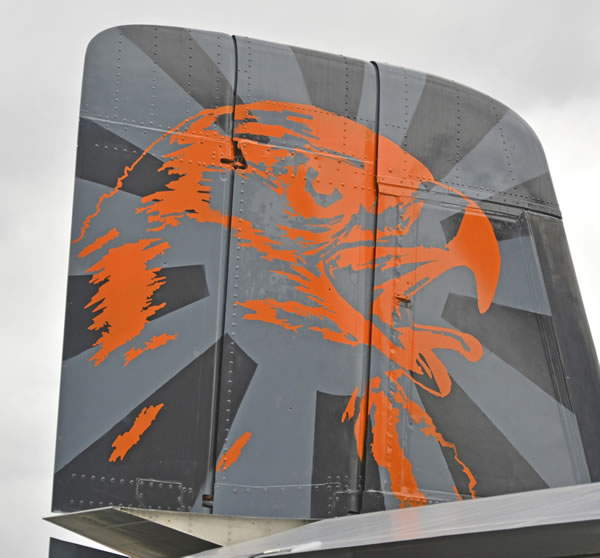E-2 Hawkeye
The E-2 Hawkeye is the Navy's all-weather, carrier-based tactical battle management airborne early warning, command and control aircraft. The E-2 is a twin engine, five crew member, high-wing turboprop aircraft .
A distinguishing feature of the Hawkeye is its 24-foot diameter rotating radar dome (rotodome) that is mounted above its fuselage and wings. This carries the E-2's primary antennas for its long-range radar and IFF systems.
This twin-turboprop aircraft E-2A was designed and developed during the late 1950s and early 1960s by the Grumman Aircraft Company for the U.S. Navy as a replacement for the earlier, piston-engined E-1 Tracer. The aircraft's performance was upgraded with the E-2B, and E-2C versions which featured changes to the radar and radio communications due to advances in electronic integrated circuits and other electronics.
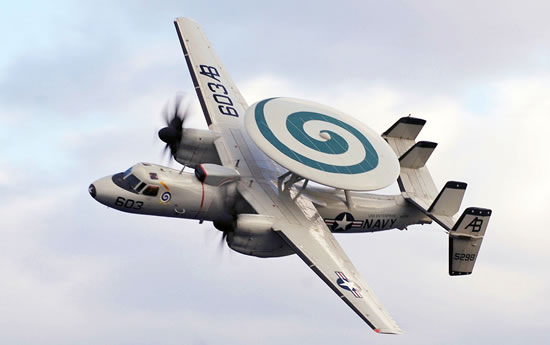 U.S. Navy E-2C Hawkeye in flight (US Navy Photo) |
In 2004, the E-2C's propeller system was changed; a new eight-bladed propeller system named NP2000 was developed to replace the previous four-bladed design. The new propeller design reduced vibrations and allowed better maintainability by being able to remove prop blades individually instead of having to remove the entire prop and hub assembly.
The E-2D Advanced Hawkeye (AHE) is the newest variant of the E-2 aircraft platform, replacing the E-2C Hawkeye. It features a state-of-the-art radar and upgraded aircraft systems that will improve supportability and increase readiness. Key E-2D objectives include improved battle space target detection and situational awareness, especially in the littorals; support of Theater Air Missile Defense (TAMD) operations; and improved operational availability. Deliveries of initial production E-2Ds began in 2010.
The E-2 is often called the "Hummer" because of the distinctive sounds of its turboprop engines, a sound unlike that of turbojet and turbofan jet engines.
Two E-2As, BUNOs 148147 and 148148, were converted as prototypes of the C-2 Greyhound.
Variants of the E-2C Hawkeye are also flown by the Egyptian Air Force, Japanese Self Defense Air Force, Taiwan Air Force and the French Navy.
U.S. Navy E-2D Hawkeye during carrier landing on the USS Abraham Lincoln |
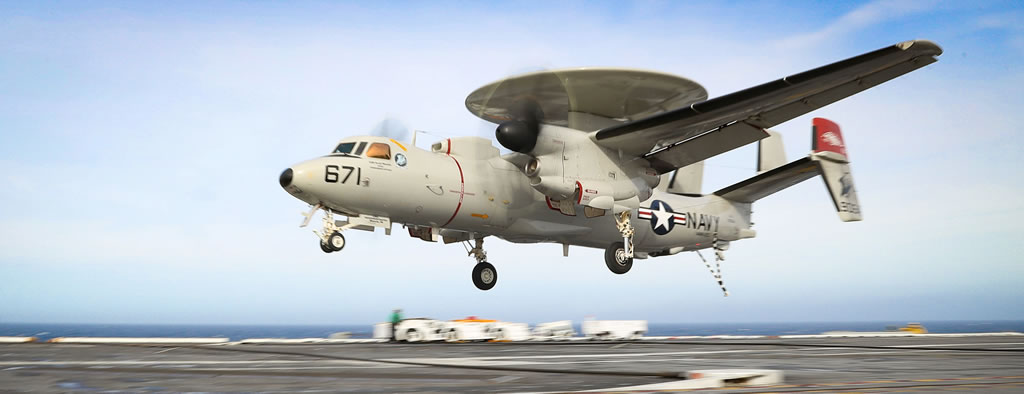 |
E-2 Hawkeye General Characteristics
- Primary Function: Airborne Command & Control, Battle Space Management.
- Contractor: Northrop Grumman Aerospace Corp.
- Date Deployed: January 1964.
- Unit Cost: $80 million.
- Propulsion: Two Allison T-56-A427 turboprop engines; (5,100 shaft horsepower each).
- Length: 57 feet 6 inches (17.5 meters).
- Height: 18 feet 3 inches (5.6 meters).
- Wingspan: 80 feet 7 inches (28 meters).
- Weight: Max. gross, take-off: 53,000 lbs (23,850 kg) 40,200 lbs basic (18,090 kg).
- Airspeed: 300+ knots (345 miles, 552 km. per hour).
- Ceiling: 30,000 feet (9,100 meters).
- Crew: Five.
E-2 Hawkeye Photographs (Courtesy of the U.S. Navy)
U.S. Navy E-2C Hawkeye preparing for takeoff from the USS Gerald Ford |
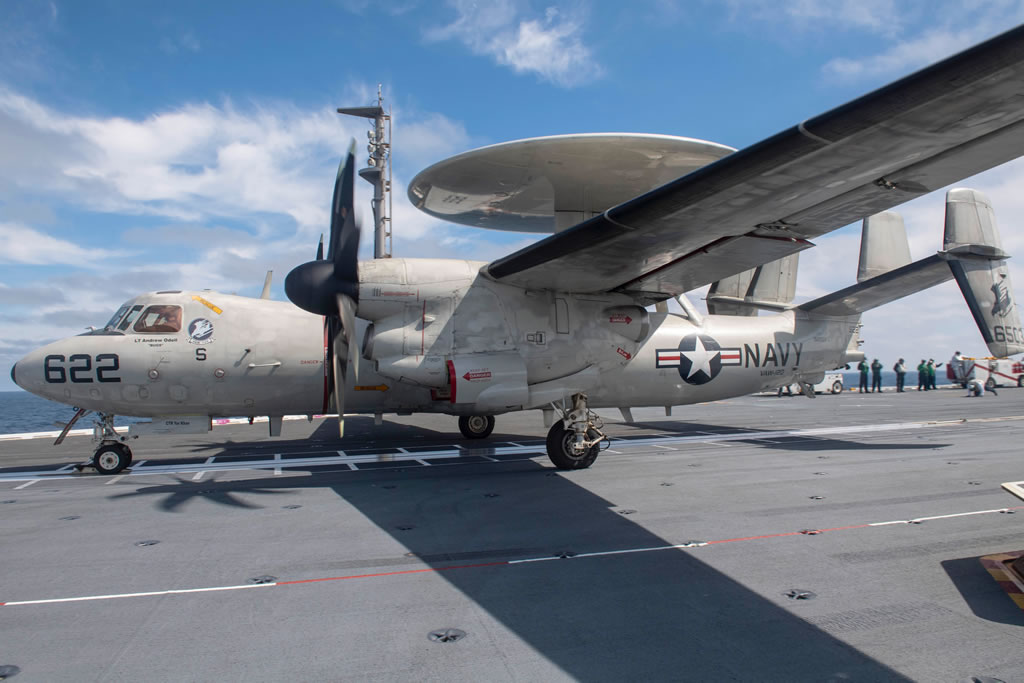 |
Navy E-2D Hawkeye carrier launch sequence |
 |
Navy E-2 Hawkeye carrier operations |
 |
E-2 Hawkeye carrier landing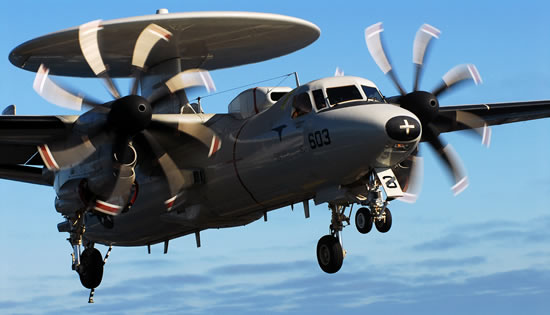 |
E-2 Hawkeye in flight |
E-2D Hawkeye assigned to the "Bluetails" ... in flight |
 |
E-2C Hawkeye of the French Air Force
E-2C Hawkeye of the French Air Forcre (Photos by DELEHELLE Eric) |
 |
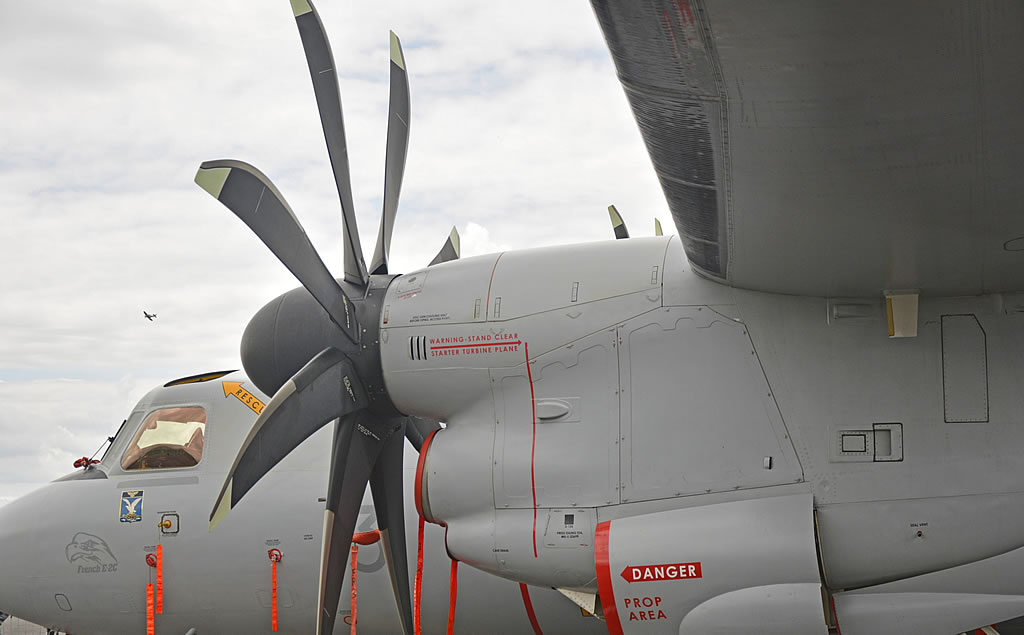 |
Tail of the French Air Force E-2C |


